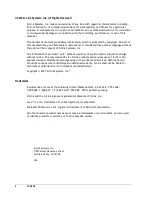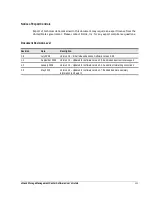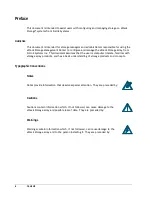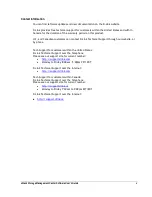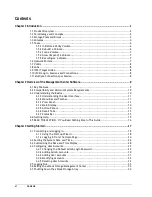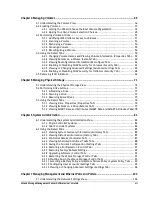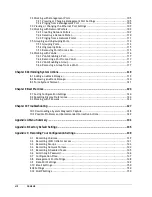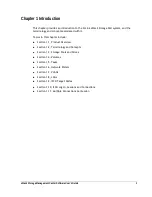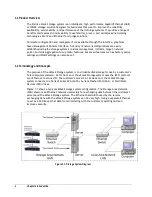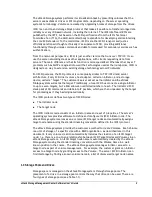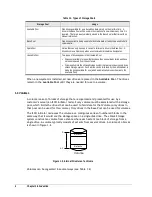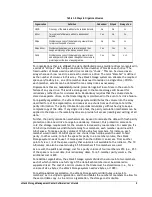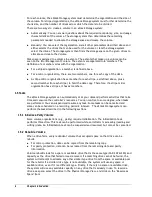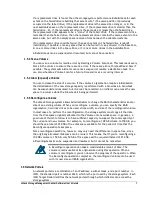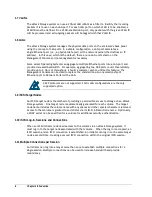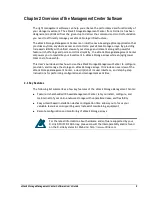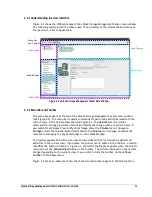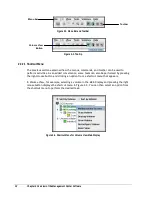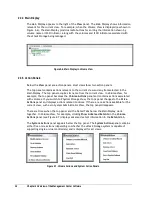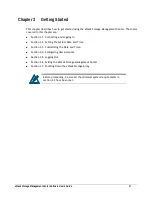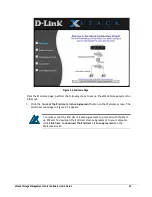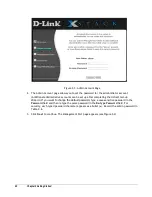
xStack Storage Management Center Software User’s Guide
5
Table 1-2. Ways to Organize Volumes
Organization
Definition
Redundant
Striped
Storage Cost
JBOD
One copy of the data is written to the selected Extents.
No
No
1x
Mirror
Two copies of all data are written to independent
Extents.
Yes
No
2x
Stripe
Distributes one copy of the data among several drives
to improve the speed of access.
No
Yes
1x
Stripe Mirror
Distributes the data among several drives and then
keeps a mirror copy of the blocks on each drive
Yes
Yes
2x
Parity
Distributes one copy of the data among several drives
and adds parity blocks spread throughout the volume to
protect against the loss of any single drive.
Yes
Yes
x + 1
For organizations that are striped, the data distributed among multiple drives is organized in
a series of “stripes”. Each stripe consists of a fixed number of blocks on each drive. The
fixed number of blocks used on each drive is called a “chunk.” This can be viewed as an
array where each row is a stripe and each column is a drive. The term “Member” is defined
as the number of columns in this array. The xStack Storage system can allocate the required
space very flexibly (i.e., an entire member does need to reside on a single drive). Within
each member, extents can be obtained from as many drives as necessary.
Organizations that are redundant provide protection against loss of data in the event of a
failure of any one drive. This adds a storage cost in that some storage will be used for
redundancy rather than for customer data. Redundancy requires that the volume data be
stored on separate drives, so that data integrity is maintained in the event of a drive failure.
For a parity organization, the xStack Storage system distributes the volume into the array
described for a stripe organization, and reserves one chunk from each stripe to hold the
parity information. The parity information provides redundancy without having to keep a
complete copy of the data. If any single drive fails, the parity calculation mechanism can be
applied to the data on the remaining drives to provide full access (reading and writing) of all
data.
Further, the parity calculation mechanism can be used to recreate the data with fresh parity
protection onto a new drive to re-gain redundancy. However, this protection comes at a
cost: the storage requirement for the volume is increased by one member. For example, if a
10 GB striped volume was distributed among four members, each member would need 2.5
GB of space. To make a parity volume of 10 GB using four members, for instance, each
member would need 3.33 GB of space: one chunk in each stripe would be used to hold
parity. In other words, to hold the space for parity in a 4-member volume, the xStack
Storage system needs to use 1/3 more space than the initiator can access. From another
point of view, 1/4 of the space used by that volume is not available to the initiator. The 10
GB volume can also be created using 2.5 GB members if five members are used.
As a result, the additional storage cost for a parity volume of four members is 25% (i.e., 25%
of the space is not user data, but redundancy data). For a 5-member parity volume, the
additional cost is 20%.
For a mirror organization, the xStack Storage system divides the volume into two members,
each of which contains one full copy of the data. Each member must be allocated on
separate drives. The cost of a mirror volume is that data must be stored twice (i.e., for a
volume of size x bytes, the xStack Storage system needs 2x bytes, or 100%).
For a stripe mirror organization, the xStack Storage system distributes volume into
members, as in a striped organization, and then doubles the number of members to allow for
the second data copy. As in a mirror organization, the storage cost is double.
Summary of Contents for DSN-5210-10 - xStack Storage Area Network Array Hard Drive
Page 9: ...xStack Storage Management Center Software User s Guide ix This Page Left Intentionally Blank ...
Page 10: ......
Page 90: ...80 Chapter 5 Managing Physical Storage This Page Left Intentionally Blank ...
Page 110: ...100 Chapter 6 System Administration Figure 6 18 Advanced Settings Tab ...
Page 132: ...122 Chapter 8 Performing System Actions THIS PAGE LEFT INTENTIONALLY BLANK ...
Page 136: ...126 Chapter 9 Best Practices This Page Left Intentionally Blank ...
Page 144: ...134 Appendix A Menu Summary THIS PAGE LEFT INTENTIONALLY BLANK ...
Page 148: ...138 Appendix B Factory Default Settings THIS PAGE LEFT INTENTIONALLY BLANK ...


